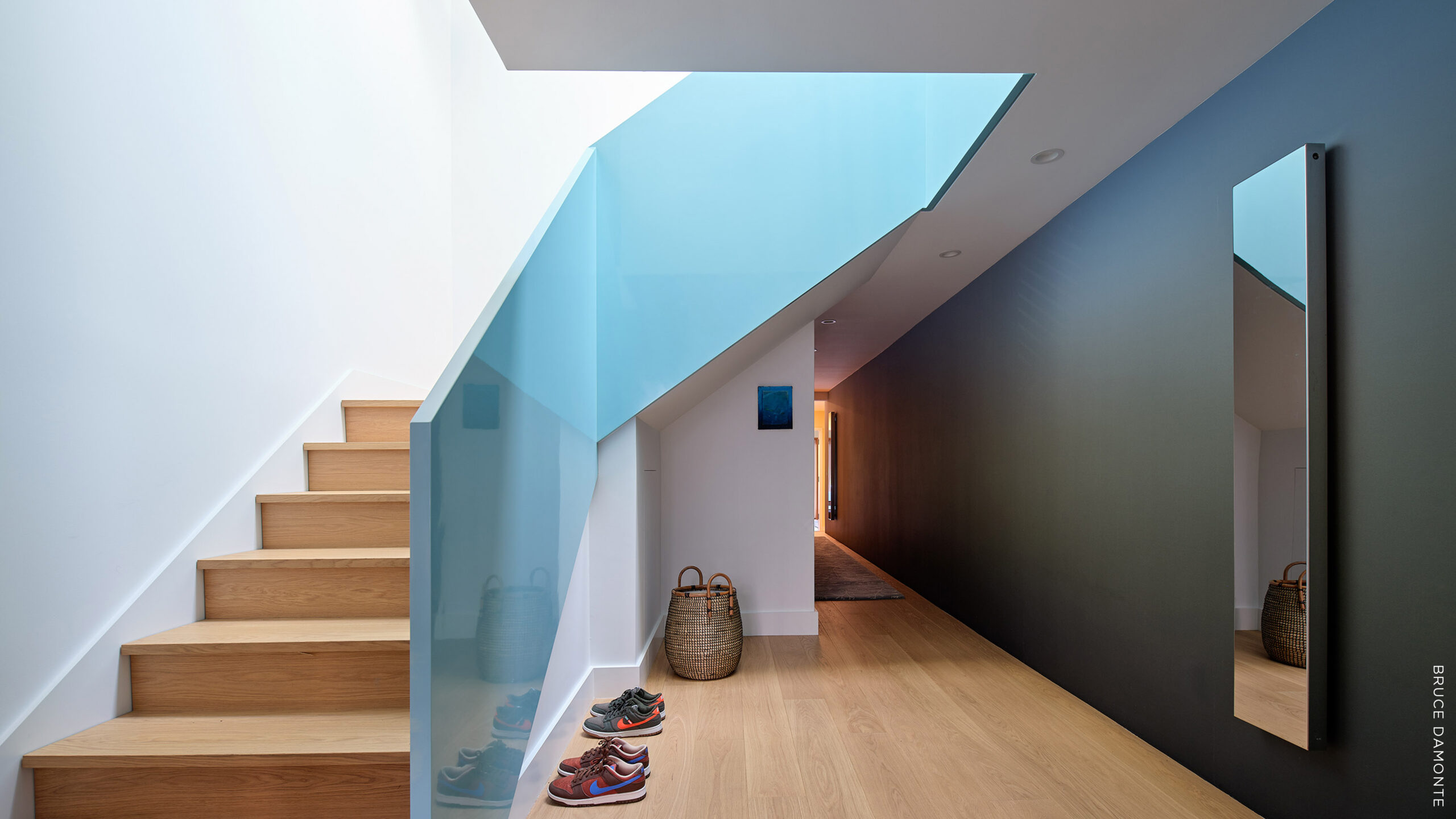A native New York City lawyer and his partner, an athletic trainer from Massachusetts, wanted to exchange their San Francisco condo for a house, so they considered bucolic Marin. Instead, they found a home bordering San Francisco’s Corona Heights Park, with views of its rocky hilltop, grasslands, and wildflowers. A metropolitan oasis now, the park was once Gray Brothers Quarry and Brick Factory. Their two-story residence, built in 1925, was part of the original working-class neighborhood that now perfectly combines nature with city life for the couple.
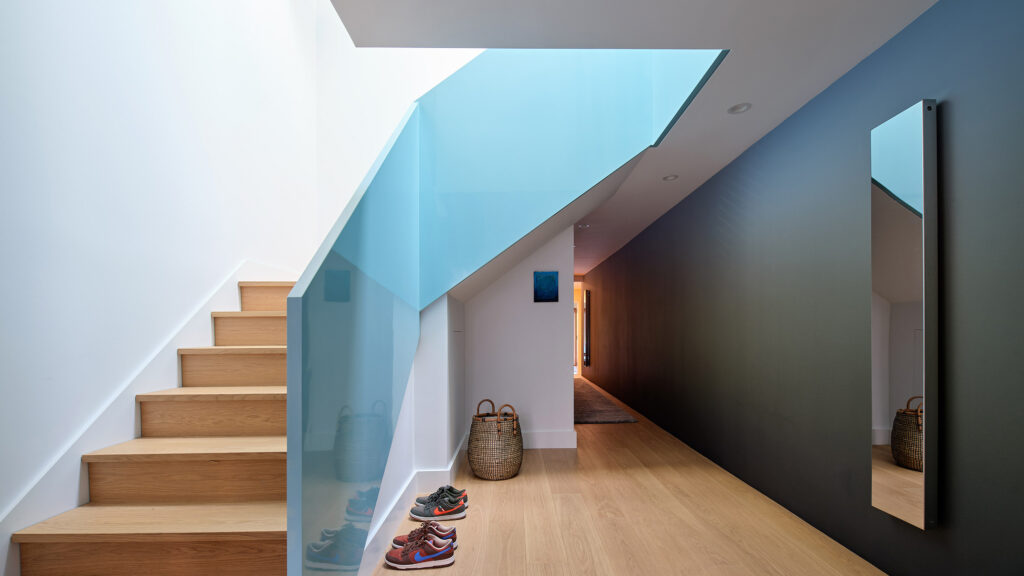
However, they wanted to renovate the 2,700 sq ft space, opening up the floor plan, illuminating it with natural light, and framing the park views. Their exposure to design and art in New York and Boston influenced their aesthetic, resulting in a collection of furnishings that featured mid-century, modern, and artisanal pieces. They needed an architect who would transform the house while understanding its history. Despite the challenge of the pandemic, they found Berkeley-based David Yama of Yama Architecture.
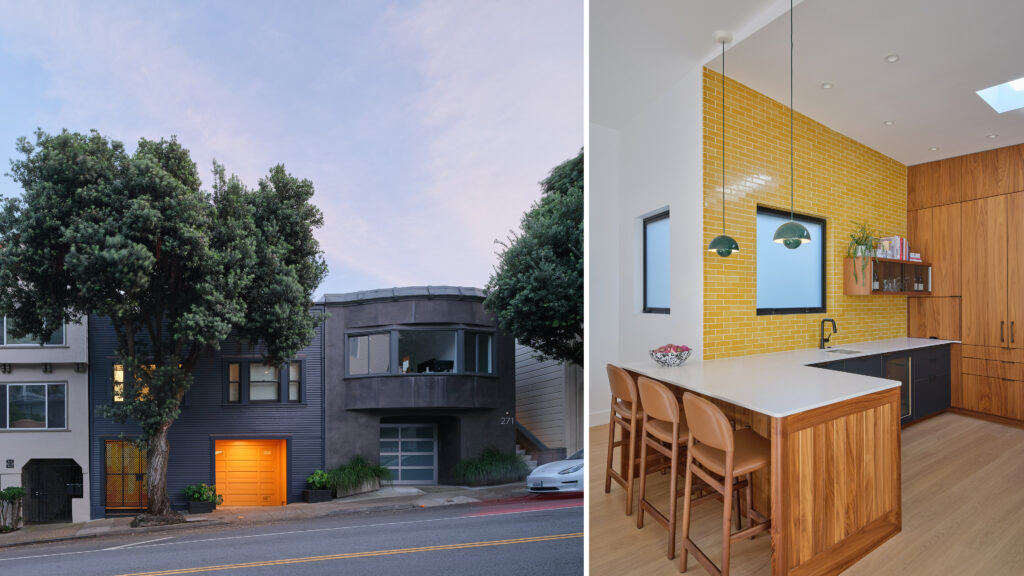
Trained at Columbia University, the architect has had a diverse career, including work in New York and Tokyo. Poetic modernism etches his designs, and for the Corona house, Yama reimagined the flow of the home from the entrance by replacing a dark and awkward foyer and staircase with a space illuminated by daylight. The focal point is a white origami-like staircase ‘wrapped’ with a high-gloss sky-blue ribbon. “I’ve been obsessed with folded shapes for a while. I’ve also been obsessed with the idea of a stair ‘ribbon.’ Ribbons are dynamic, festive, colorful, and entirely decorative,” says Yama.
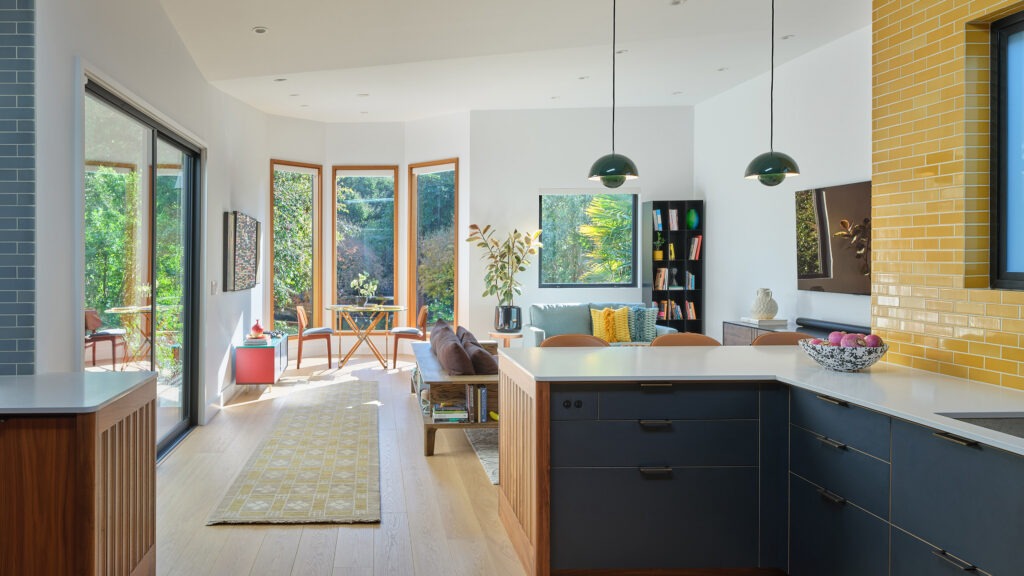
Visitors ascend white oak treads, experiencing light from the skylight and a translucent interior window glowing with LED strips. On the second floor, Yama flipped the original layout, moving the public rooms to the rear and making the front rooms private. The open-plan living room, dining room, and kitchen allow the clients to enjoy the park’s landscape. Removal of a tiny attic between the flat ceiling and the sloped roof gained height and a faceted ceiling. “We saw the potential of the existing ‘angled’ roof framing as a way to design movement into the new space,” explains the architect.
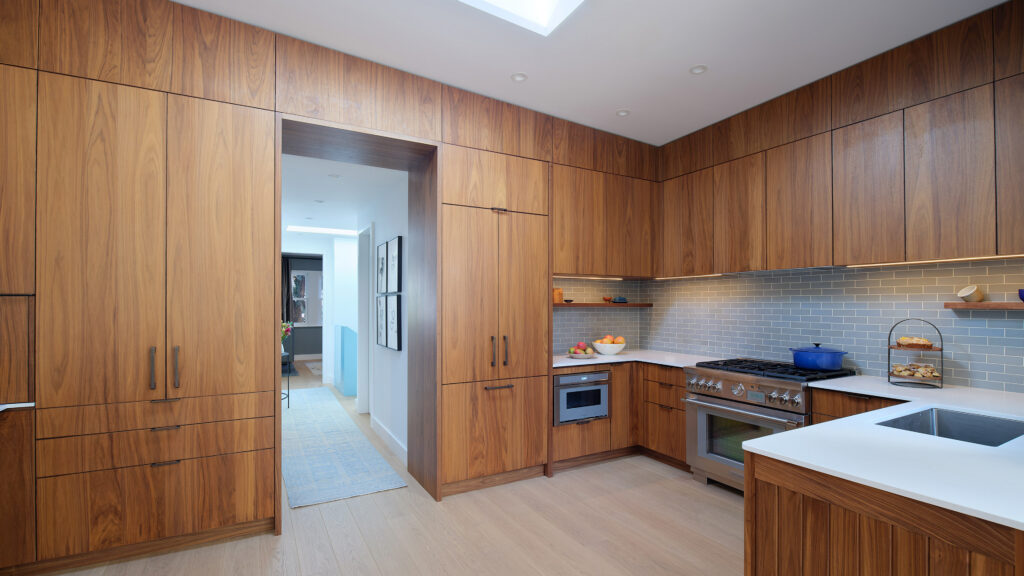
The open living and casual dining room painted a bright reflective white, displays the clients’ furnishings. In the bay window, where Yama replaced double-hung windows with tall, wood-framed ones, the homeowners dine at a round “X” leg table. Or they choose to sit at the kitchen bar that dovetails with the living room.
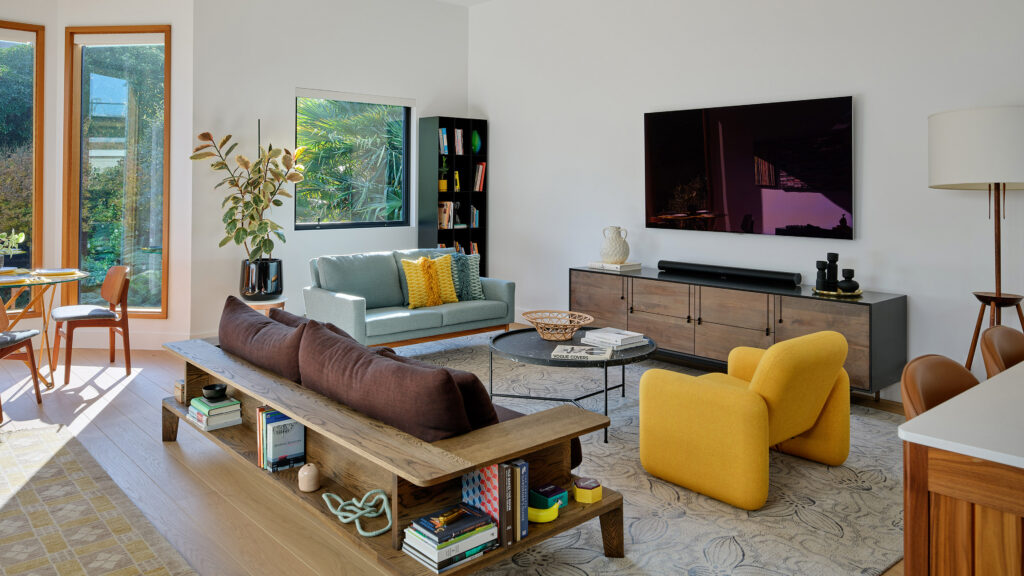
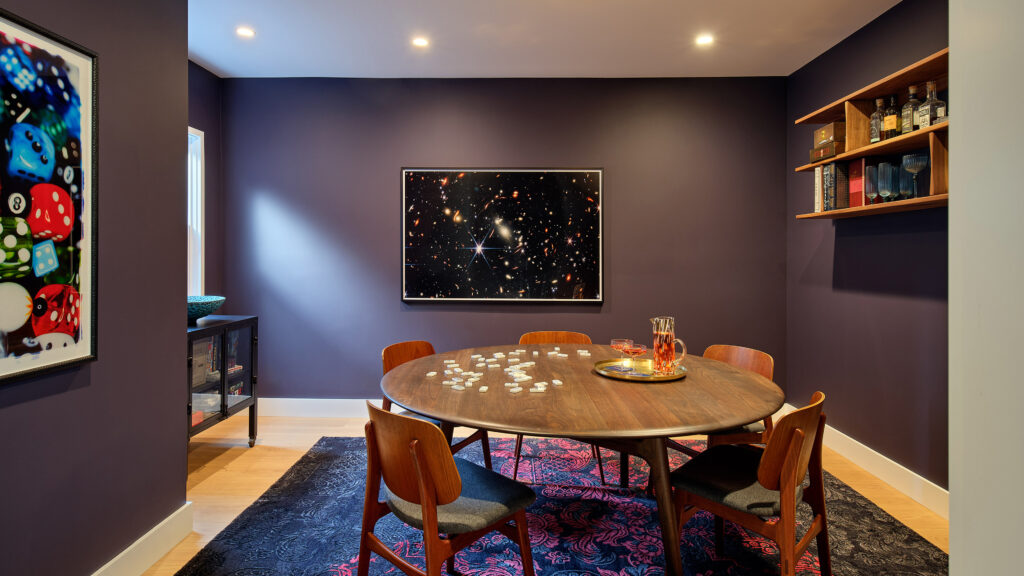
Yama selected Henrybuilt for the kitchen millwork. The pantry showcases walnut cabinetry with a blue-black laminate face surmounted by a Mango Heath Tile backsplash. Whimsical green flower pot pendants dance in the air. On the opposite side, Heath’s soft blue Hydrangea tiles complement the warm walnut wood. While the kitchen floods with light from a skylight and lightwell, the clients opted for a dark, formal dining and game room, painting it a deep, moody amethyst. Their vintage Børge Mogensen dining chairs surround an elegant wood tripod table, which they highlighted with Rosie Li’s geometric flush-mount ceiling fixture.
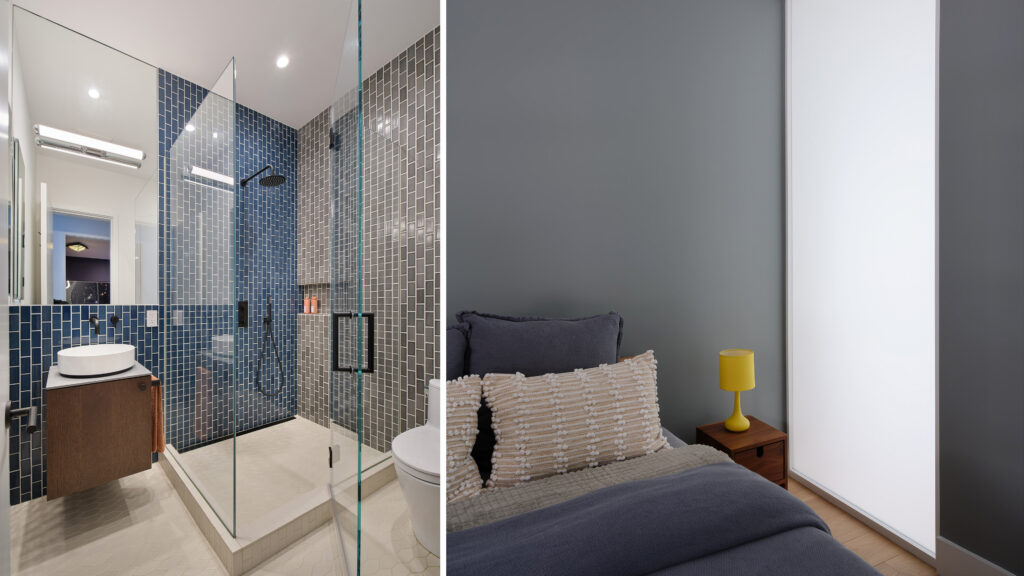
On the ground level, the hallway’s atmospheric mural leads to the primary suite. “For the clients’ holiday gift, I gave them a wallpaper consultation with designer Alison Damonte instead of a bottle of bubbles,” Yama says. They selected a Calico ombré that transitions from dark green at the bottom to blue at the top. As if to echo that, he painted the tranquil bedroom a leafy green and its double doors open to a back garden and open skies beyond.

